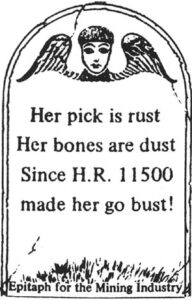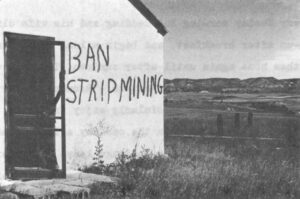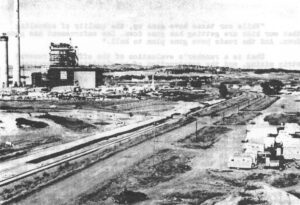The little town of Albany, Texas, lies in the oil patch — any area where oil exists and is produced, and the oilman’s profession — between Abilene and Wichita Falls. It is surrounded by what are known as stripper wells, those that produce ton barrels or less of oil a day. The curious, hammer-shaped pumpers can be seen from the highway, rising and falling in mechanical affirmation, and on the front lawns of Albany’s more fortunate residents. Owning even one stripper well not only qualifies one to join the fraternity of oil, but it also can provide several hundred extra dollars of income a month.
Stripper wells represent the leavings of independent oilmen and major companies who are not interested in working the dribbles. Strippers constitute seventy per cent of the oil wells in America, though their percentage of the total production is small. There are eighty-eight thousand stripper wells in Texas alone, accounting for only fifteen per cent of production. With proper attention, a stripper will pump indefinitely. It is the least glamorous way to qualify as an oilman, yet those who make a living at it sustain valuable production.
One such man is Carl Schkade — “Scotty” — who dropped out of school to work as a roughneck on wildcat oil wells when he was in his teens. He has leased and operated his own stripper wells for the last fourteen years. Although he was raised on a farm, he is proud to have been in the oil patch for twenty-four years, and to be making what he considers to be good money.
Schkade is about as far removed from Houston’s Petroleum Club — the prestigious gathering place on top of the Exxon Building — as an oilman can be. He built his own house out of yellow brick on the outskirts of town, and until recently has done almost all the work on the wells himself. Most days at noon his oily engineer’s boots can be seen resting on the front steps, when he takes time off for lunch.
He produces about forty-five barrels of oil a day from his one hundred wells. That means working ten hours a day, six days a week, and a half-day on Sundays, wearing green fatigues and a cap to keep the sun out of his eyes. Those working hours don’t include the time spent on paper work, or the time his wife, Marilyn, puts in at the wells.
“All she does,” says Schkade, “is check the leaks, check the injection pumps, check the oil, grease the fittings, and sit with the pumper until the pulling unit comes out from town.
Schkade considers himself lucky to have had his money invested in stripper wells in November 1973, when the price of crude oil skyrocketed. To keep stripper wells profitable, the price of stripper oil is not controlled, and therefore floats with the market price.
“I’ve made money,” he says, “but the costs have gone up, too. Labor costs have doubled. Electricity is up thirty per cent; the pulling bill [the cost of priming a well so it will pump] went from twelve dollars an hour to twenty-seven dollars. Pipe and tubing that was fifty cent a foot is now about four dollars a foot.”
Still, the Schkades’ production has tripled in value, at least. With four children, they welcome the additional income. They have been able to pay off debts, including those for new oil leases. They also bought material necessary to construct a small office for the paper work, which is attached to the Schkade’s garage.
“Marilyn built the office,” he says. “I’ve just been too busy.”
The yard behind their house is stacked with old pipe once considered worthless. Sitting among the weeds are old pumping units, steel rods, and various discards left over from years of servicing the wells. Now on weekends, the Schkades’ back yard usually has at least one stranger in a Stetson wandering about, inspecting the cast-offs. For oilmen are desperate for drilling equipment of any description, as long as it is functional.
The jump in the price of crude oil has brought the Schkades other satisfactions that are almost as keen as the profits.
“I remember just a few years ago,” says Schkade, “when you couldn’t sell oil if you had it. They wouldn’t lay a pipeline to your production unless you had at least fifty barrels a day. And they just might accept a pipeline if you wanted to build it yourself, and pay for it. Now they’re competing to get the production, and sending in trucks. We don’t even have to pay the trucking charges for the gathering of the oil, which I would never have believed.”
The other satisfaction brought by the rise in oil prices is a few leisure hours a week.
“There are some fields I just don’t check on Sundays,” Schkade says, almost defensively. “I just sit up at the house, and talk to the kids.”
One of Albany’s most successful independent oilmen is A.V. Jones, who with his brother owns a company that does its own leasing and exploration, as well as the operation of some stripper wells.
“This is where the dirty work is done,” Jones says of his part of Texas. “You probably couldn’t hire people to work as hard as these stripper operators work, for the money involved. But it gives them independence — they’re their own bosses. They could probably all make as much money as mechanics.”
The new oil boom has affected Albany just as it has other towns in Texas.
“You can’t get housing here now,” says Jones. “Wages have doubled. It’s a now day in the oil patch. Young man are going back to work in the oil fields, and they look different. It used to be that you’d catch hell if you even had sideburns. Now you’re starting to see a little flip of hair underneath those hard hats.”
So the benefits of high prices for crude oil have filtered down to the bottom of the industry.
Says Jones, “There’s just no such thing as a poor working oilman.”
Received in New York on February 20, 1975
©1975 James Conaway
James Conaway, a freelance writer, is an Alicia Patterson Foundation award winner. This article may be published with credit to Mr. Conaway and the Alicia Patterson Foundation.




